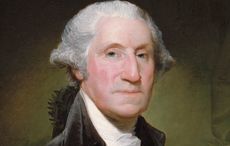The new Amy Adams movie called 'Leap Year' deals with a woman who can ask a man to marry her on February 29th in a leap year. But where does this tradition come from and is there any truth to the movie's premise?
Yes actually. It is said the tradition began in 5th century Ireland when St. Bridget bitterly complained to St. Patrick that women had to wait far too long for men to propose. The legend says St. Patrick decreed the women could propose on this one day in February during the leap year. I'm sure the women were thrilled.
The tradition was then taken to Scotland by Irish monks. Back in 1288, the Scots passed a law that allowed women to propose marriage to the man of their dreams in a Leap Year. The law also stated that any man who declined the proposal in a leap year would have to pay a fine. The fine could range from a kiss to payment for a silk dress or a pair of gloves.
There is also precedent in English law. February 29th was ignored and had no legal status. People believed that traditions would also have no status on that day and that it was possible to have women propose thereby altering an unfair custom that only let men propose marriage.
In the United States, some people refer to February 29th as Sadie Hawkins Day with women allegedly having the right the right to run after unmarried men to propose.
There is also precedent in English law. February 29th was ignored and had no legal status. People believed that traditions would also have no status on that day and that it was possible to have women propose thereby altering an unfair custom that only let men propose marriage.
In the United States, some people refer to February 29th as Sadie Hawkins Day with women allegedly having the right the right to run after unmarried men to propose.
Sadie Hawkins was a female character in the Al Capp comic strip Li'l Abner.




Comments